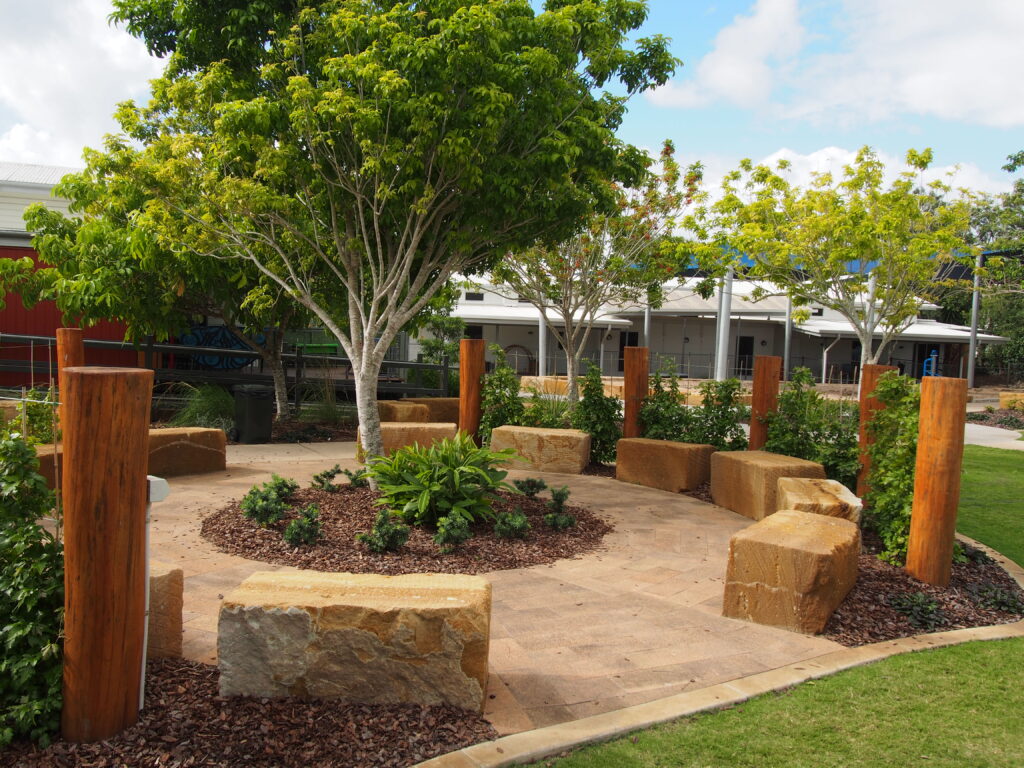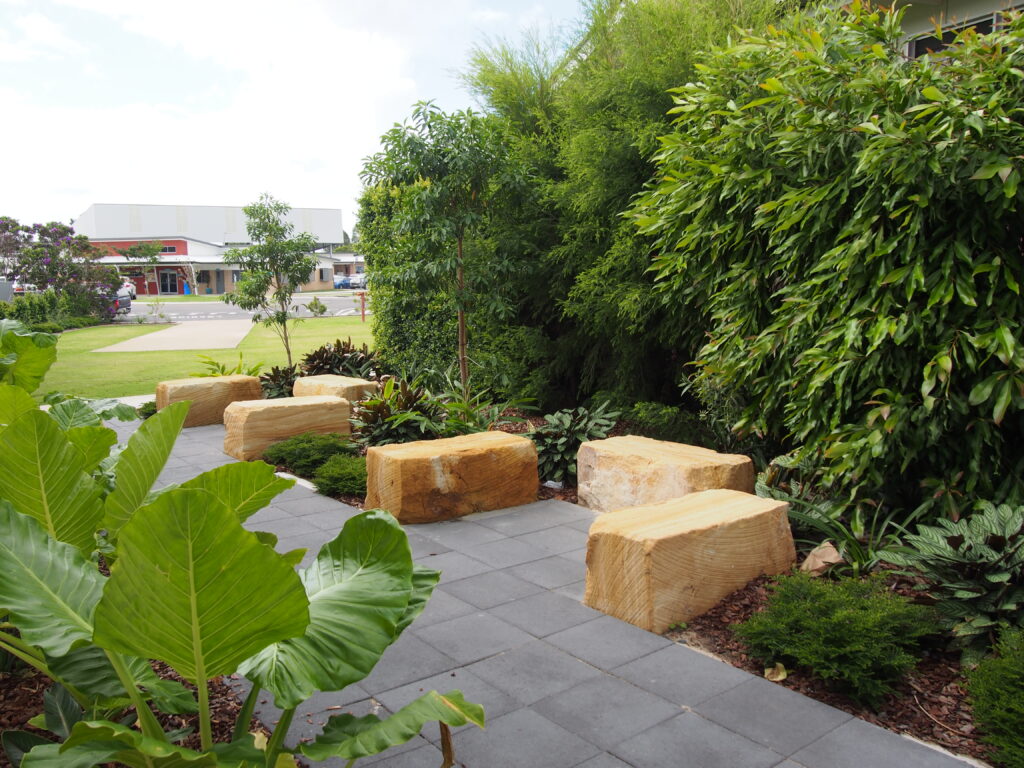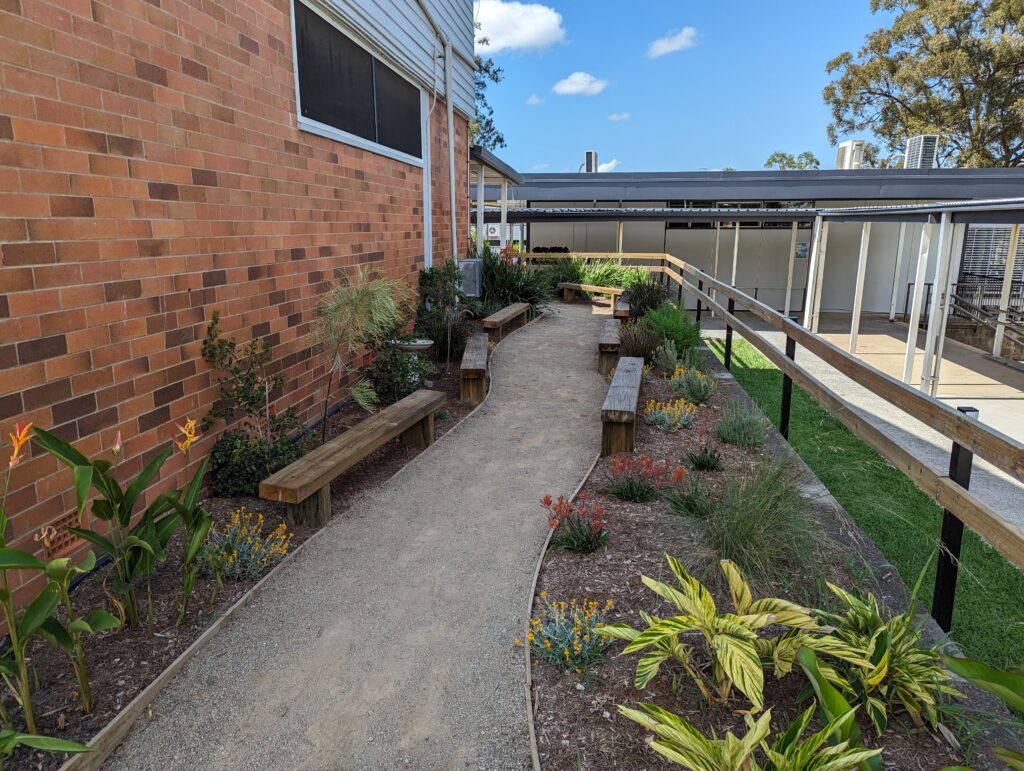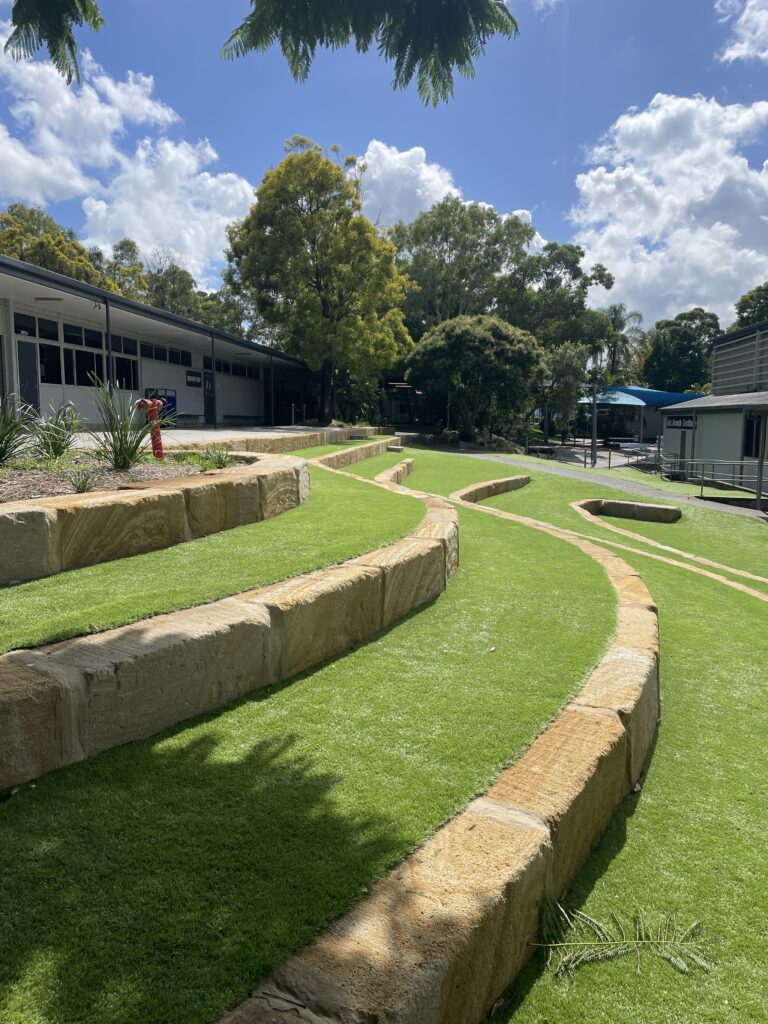Orterra: Creating Calm: Supporting Teacher Mental Health and Wellbeing Through Better Outdoor Spaces
Teacher mental health and wellbeing is a growing concern in today’s educational landscape. As workloads increase and student needs evolve, teachers feel they are constantly having to adapt. Data shows 60% of teacher absences are for mental health or emotional problems. One study found that nine out of ten teachers reported a decline in wellbeing and mental health. So how can landscape help?

The physical environment where teaching takes place plays a powerful yet often overlooked role in supporting wellbeing. Outdoor environments have long been celebrated for their benefits to student engagement and mental health. But what about educators?
Many studies over the years have shown the benefits of being out in nature. Richard Louv coined the term Nature-Deficit Disorder, often applied to children—yet the same principles apply to adults. So how do we change this?
The Reality: Teachers Want to Teach Outdoors but Need the Right Spaces
Many educators love the idea of teaching outdoors but are held back by practical barriers. A recent conversation with teachers highlighted recurring issues: lack of shade, no seating, wet or muddy ground, and poor access to teaching resources.
“When it’s been raining, I won’t make students sit on the ground,” one teacher shared. Others pointed to sun exposure, unpredictable weather, or a simple lack of designated outdoor areas. Some admitted they didn’t realise they were allowed to take the class outside.
And when weatherproof spaces do exist, they’re often in high demand. “The few shaded areas are already being used by other classes,” another teacher said. “It’s difficult to schedule outdoor lessons, even when we want to.”
The message is clear: without well-designed outdoor learning environments, teaching outside can feel like one more logistical stressor rather than a refreshing change.

Designing Spaces That Support Teachers Too
The right outdoor space can support learning and mental health for students and teachers alike. Educators describe their ideal outdoor classroom as shaded, clean, weather-protected and flexible. Stepped amphitheatres, timber platforms, chalkboards and collaborative work tables top the wish lists.
There’s also a desire for variety: spaces for full-class teaching, small group work and quiet reflection. From shaded gardens with seating nooks to purpose-built decks and learning pods, teachers want environments that adapt to different learning needs and teaching styles.
Outdoor Learning Can Lighten the Load
For teachers, being outside can provide a much-needed shift in atmosphere—a chance to reconnect with nature, break the routine and feel more present with students. This shift can ease stress and contribute to a healthier, more balanced workday.
But without the infrastructure to support it, this potential is lost.
Dedicated Spaces for Teachers
Often, school outdoor spaces are for students. So where do teachers go to relax on their breaks? Having peaceful areas where teachers can decompress is essential to supporting their wellbeing.
The Next Step
If we want to support teacher wellbeing, we need to design outdoor spaces that make teaching easier, not harder. Purpose-built environments reduce stress, promote flexibility and help teachers deliver meaningful learning in settings that nourish their mental health, too.
At Orterra, we specialise in creating outdoor spaces that are practical, inviting and built for educators. Let’s create school environments where stepping outside supports wellbeing—not just for students but for teachers too!

Design outdoor learning environments
Why limit learning to the classroom? Outdoor spaces can be designed for education, exploration, and relaxation, helping students engage with nature in meaningful ways. Schools can create:
• Sensory gardens, designed to stimulate different senses.
• Butterfly gardens, supporting local ecosystems.
• Vegetable patches and composting stations, where students can participate in sustainability projects.
These outdoor spaces allow students to monitor plant life, track wildlife activity, and experiment with climate-friendly practices all while improving their mental wellbeing and sense of environmental responsibility.

A greener future starts with schools
Sustainability isn’t just about planting trees, it’s about fostering a culture of environmental stewardship. By integrating native gardens, wildlife habitats, and outdoor learning spaces, schools can create vibrant environments where students engage with nature, build ecological awareness, and contribute to a healthier planet.
Want to bring sustainability to your school?
Let’s work together to transform your school grounds into a biodiverse, eco-friendly learning space.
0422 243 815
[email protected]
orterra.com.au

